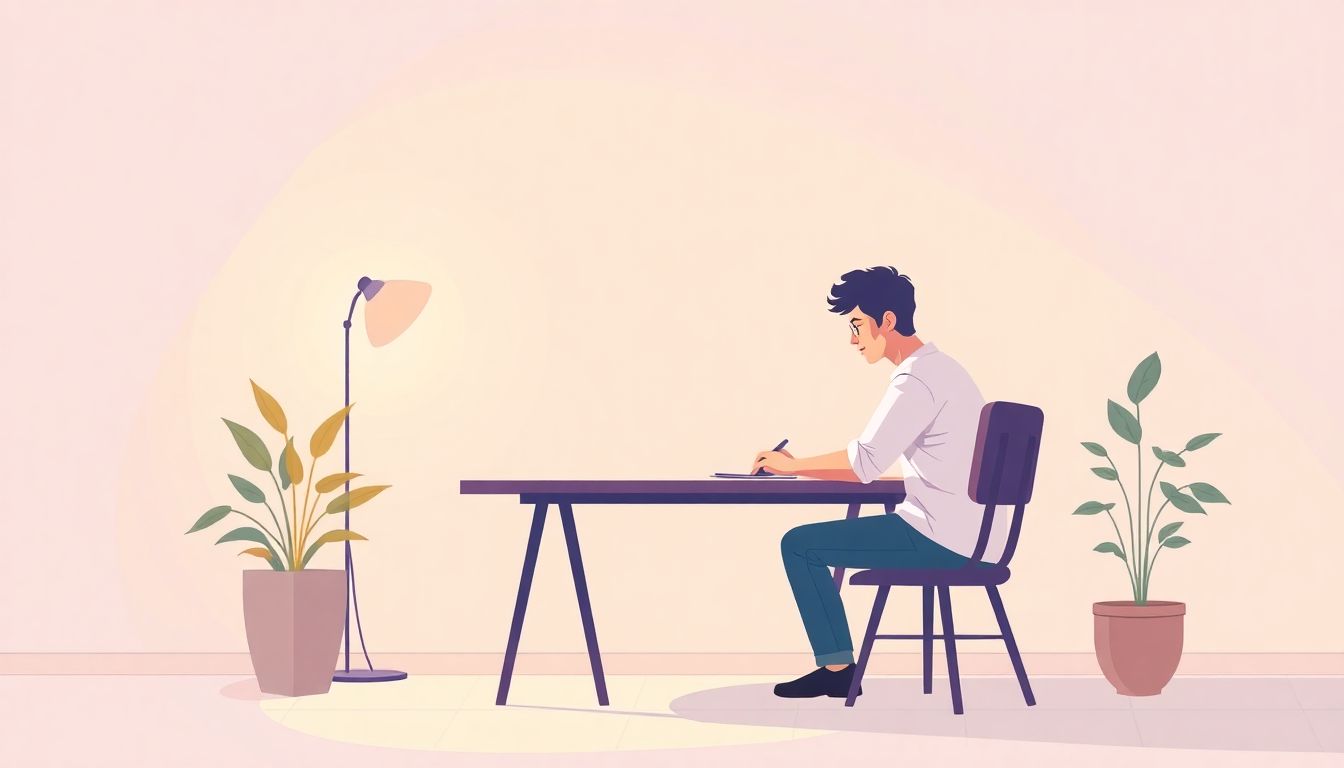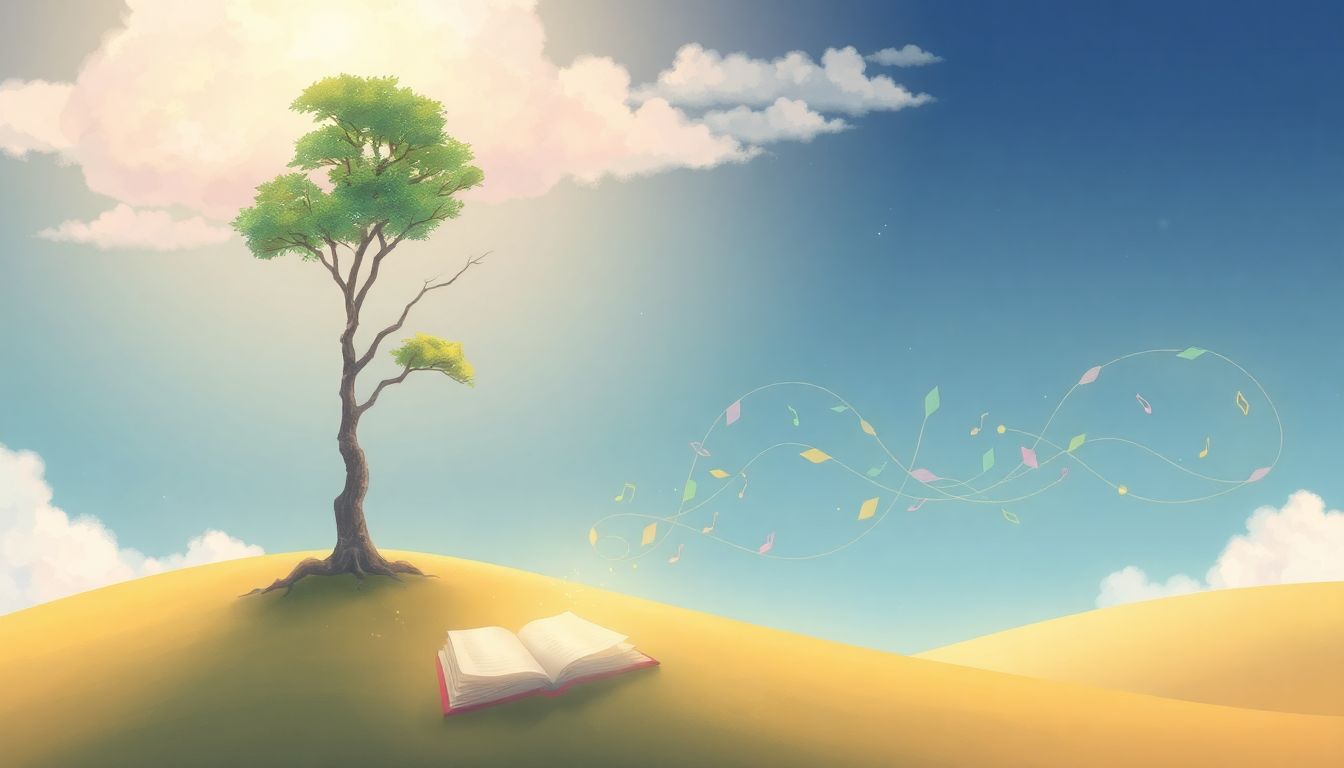If you’ve ever stared at a blank page, desperately seeking inspiration for experimental poetry, you’re not alone. Many of us find the creative process daunting, as traditional forms often feel limiting or uninspiring. But what if there was a way to break free from those constraints and explore new poetic territories?
Stick around, because I’m about to share some exciting ChatGPT prompts that will spark your creativity and help you craft one-of-a-kind poems. These tools can help you challenge your poetic boundaries, unleash your imagination, and even collaborate with others in innovative ways.
From generating powerful imagery to exploring unusual perspectives, there’s a world of poetic possibilities waiting for you. Let’s dive in and unlock your potential as a poetic adventurer!
Key Takeaways
- Many writers face challenges finding inspiration for experimental poetry; ChatGPT prompts can help break through creative blocks.
- Try prompts that explore surreal imagery, mix poetic forms, or experiment with perspective to enhance your poetry.
- Collaborative poetry with ChatGPT can lead to unique creations through group efforts and theme-based prompts.
- Emotionally charged poetry can be generated using prompts that focus on core human feelings and experiences.
- Blending different genres or writing from unconventional viewpoints encourages fresh narratives and engages diverse audiences.

Effective ChatGPT Prompts for Experimental Poetry
Using ChatGPT for experimental poetry can open up new creative avenues.
Here are some effective prompts you can try:
- “Generate an experimental poem that includes three surreal images and two abstract concepts.”
- “Create a poem using at least five words that rhyme with ‘light’ in unique contexts.”
- “Compose a poem that blends elements of haiku and free verse, focused on nature’s chaos.”
- “Write a poem that alternates perspectives, starting from a tree’s point of view, then shifting to that of a passing bird.”
- “Develop a piece of experimental poetry that incorporates different colors as emotions, each stanza representing a new color.”
How to Use ChatGPT for Writing Unique Poems
Getting started with unique poem creation using ChatGPT is straightforward and rewarding.
Begin by setting your parameters: decide on the poem’s theme, style, and length.
Use ChatGPT to brainstorm ideas or generate specific lines. For example:
- “Help me write a love poem in the style of Emily Dickinson.”
- “Give me three unique lines about the passage of time for a free verse poem.”
- “Create an outline for a narrative poem that tells the story of a lost star.”
Adjust the outputs based on your voice and style, making changes until you have a piece that feels personal.
Prompts to Challenge Traditional Poetry Forms
Experimenting with traditional poetry forms can yield some fascinating results.
Try using these prompts to truly push the boundaries:
- “Write a sonnet that follows an unconventional theme, like technology or climate change.”
- “Create a limerick that subverts typical limerick humor by being introspective.”
- “Generate a sestina that alternates between feelings of nostalgia and hope.”
- “Develop an acrostic poem where each line narrates a different character’s perspective.”
These prompts can help you mix classic structures with fresh content, leading to innovative results.
Creating Imagery and Metaphors with ChatGPT
Strong imagery and inventive metaphors are essential in poetry.
ChatGPT can assist you in creating evocative content that captivates readers.
Here are some prompts you can use immediately:
- “Generate five metaphors around the concept of ‘freedom’ in poetic form.”
- “Create a vivid scene of a storm using at least three sensory details.”
- “Write a poem that includes the metaphor ‘my heart is a thousand fluttering moths’ in different contexts.”
- “Develop a piece that describes a city at dawn with rich, visual language.”
Utilizing these prompts can help make your poetry feel more alive and engaging.

Ideas for Collaborative Experimental Poetry Using ChatGPT
Collaborating on poetry can lead to unexpected and rich results.
Using ChatGPT as a creative partner opens up a world of possibilities.
Here are some engaging prompts to kick-start your collaborative efforts:
- “Create a round-robin poem: each collaborator writes a stanza, building on the last.”
- “Generate a poem where each line is written from the perspective of a different animal.”
- “Write a piece that alternates between lines written by different authors, with a theme of urban life.”
- “Compose a poem together, mixing one person’s imagery with another’s emotional tone.”
- “Develop a collaborative haiku chain where each participant adds a new stanza based on the previous one.”
Trying out these prompts can enhance teamwork while sparking creativity in everyone involved.
How to Generate Emotionally Charged Poetry Prompts
Emotionally resonant poetry can connect deeply with readers.
Crafting prompts that evoke strong feelings requires a focused approach.
Start by tapping into core human emotions. Here are some actionable prompts to inspire intense poetry:
- “Write a poem that captures the feeling of profound loss using sensory imagery.”
- “Generate lines that explore the joy of a surprise encounter with an old friend.”
- “Create a poem focused on the fear of change, using metaphors related to nature.”
- “Develop prompts that describe overwhelming love and its contradictions.”
- “Compose a piece that contrasts feelings of loneliness with moments of connectedness.”
These prompts can help you unearth powerful emotions and translate them into poetic expressions.
Mixing Different Genres in Poetry with ChatGPT
Experimenting with genre can yield exciting and fresh poetry.
Blend different styles to create hybrid works that challenge expectations.
Use the following prompts to navigate through genre-blending poetry:
- “Write a sonnet that includes elements of sci-fi and fantasy.”
- “Create a poem that combines spoken word style with traditional ballad forms.”
- “Generate a narrative poem that incorporates elements from horror and romance.”
- “Compose a free verse piece that fuses historical and modern themes.”
- “Develop a lyrical poem that integrates visual art descriptions, like a painting or sculpture.”
Mixing genres not only enriches your writing but also engages a diverse audience.
Prompts for Writing Poetry from Unusual Perspectives
Writing from an unconventional viewpoint can breathe new life into your poetry.
Exploring different perspectives challenges you to think outside the box.
Here are prompts that can help you experiment with unique narratorial voices:
- “Write a poem from the perspective of a piece of furniture in a busy cafe.”
- “Generate lines detailing a day in the life of a character in a painting.”
- “Create a poem told from the viewpoint of a raindrop falling to the ground.”
- “Compose a piece that expresses the thoughts of an overlooked tree in an urban setting.”
- “Develop a narrative where an inanimate object, like a book or clock, reveals its secrets.”
These prompts can lead to fresh narratives and insights, encouraging rich creativity in your poetic work.

Speeding Up the Creative Process in Experimental Poetry
Using ChatGPT can significantly accelerate your creative process in experimental poetry.
Because it offers instant suggestions and a wealth of ideas, you can quickly navigate through brainstorming.
Try these prompts for a quicker poetry-writing experience:
- “List ten unique words related to solitude that can inspire a poem.”
- “Generate a random theme and three corresponding images to kickstart a poem.”
- “Create a short poem with a strict time limit: 5 minutes for the first draft.”
- “Provide a list of poetic techniques I can incorporate into a single piece.”
- “Suggest three themes merging dreams and reality along with a short stanza for each.”
These strategies will help you get past writer’s block and produce more poetry in less time.
Finding Inspiration for Your Poetic Journey with ChatGPT
Finding inspiration is essential in any creative endeavor, especially poetry.
ChatGPT can serve as a valuable tool for discovering new ideas and themes.
Here are some prompts to jumpstart your poetic journey:
- “Give me three unusual pairings of emotions and settings for a poem.”
- “Generate a list of sensory experiences to explore in my next poem.”
- “Create a mood board of words that capture the essence of ‘nostalgia’.”
- “Provide five unexpected questions that can spark a poem.”
- “List three historical events and suggest a poem focusing on one of them.”
By engaging with these ideas, you’ll discover fresh inspiration and new directions for your poetry.
FAQs
You can use ChatGPT to generate prompts that inspire unique themes, structures, and imagery. Input your desired style or topic, and let the AI help you brainstorm and refine your poem’s language and form.
Consider prompts that mix free verse with structured forms, or challenge rhyme schemes. For example, instruct ChatGPT to create a sonnet that incorporates modern slang or to write haikus with unexpected themes.
Provide emotional keywords or themes to ChatGPT, such as grief, joy, or nostalgia. Ask it to create prompts that evoke specific feelings, or challenge it to write a poem based on a powerful memory or experience.
Invite others to contribute by alternating lines or verses with ChatGPT. Create a theme together, and each participant can add a stanza based on the previous one, fostering a unique and collective poetic voice.
